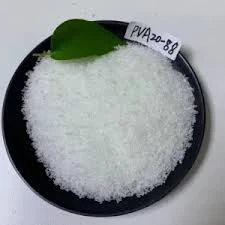The Role of HPMC in the Formulation of Washing Soap
In the realm of personal and home care products, the formulation of washing soaps has evolved significantly, driven by consumer demands for efficiency, sustainability, and skin-friendly ingredients. One of the pivotal components making waves in the industry is Hydroxypropyl Methylcellulose (HPMC). This versatile polymer is gaining recognition for its multifaceted applications and benefits in washing soap formulations. In this article, we will explore the role of HPMC in washing soaps, its properties, advantages, and environmental implications.
Understanding HPMC
Hydroxypropyl Methylcellulose is a non-ionic, water-soluble polymer derived from cellulose, a natural polymer found in the cell walls of plants. HPMC is produced by the reaction of alkali with cellulose and subsequent treatment with propylene oxide and methyl chloride. This process results in a material that exhibits excellent solubilizing, thickening, and film-forming properties. Its multivalent functionalities make it an ideal candidate for various formulations, especially in washing soaps.
The Benefits of HPMC in Washing Soap Formulations
1. Improved Viscosity and Consistency One of the primary roles of HPMC in washing soaps is to enhance viscosity, providing a smooth and desirable texture. A consistent thickness not only improves product usability but also aids in preventing separation of ingredients, ensuring a uniform mixture.
2. Stabilization of Formulations HPMC acts as a stabilizing agent, preventing phase separation in liquid soaps and maintaining uniformity over time. This stability is essential for consumer appeal, as it ensures that the product remains usable throughout its shelf life.
3. Moisture Retention Another significant advantage of HPMC is its ability to retain moisture. This characteristic is particularly beneficial in washing soaps as it helps to keep skin hydrated during and after washing. By forming a thin film on the skin, HPMC reduces moisture loss, making soaps gentler and more suitable for sensitive skin.
washing soap hpmc

4. Enhanced Cleaning Performance The inclusion of HPMC in washing soaps can enhance cleaning efficiency. The polymer can modify the interface between the soap and water, improving the soap's ability to dissolve and emulsify dirt and oils. This can lead to a more effective cleaning action without requiring harsh surfactants.
5. Biodegradability and Eco-friendliness As consumer awareness regarding environmental sustainability grows, products that are biodegradable and eco-friendly are increasingly sought after. HPMC, being derived from cellulose, is inherently biodegradable. Its inclusion in washing soaps allows manufacturers to create environmentally responsible products without sacrificing performance.
Formulation Considerations
While the advantages of HPMC in washing soap formulations are clear, proper formulation is crucial to maximize its benefits. The concentration of HPMC must be optimized based on the desired viscosity and stability. Usually, a concentration range of 0.5% to 3% is adequate, depending on the specific formulation and performance criteria.
Additionally, the compatibility of HPMC with other ingredients must be assessed. It is essential to ensure that the properties of HPMC do not interfere with the functions of active ingredients like surfactants and fragrances. Understanding the interactions between HPMC and other components will facilitate the development of stable and effective soap formulations.
Conclusion
In summary, Hydroxypropyl Methylcellulose (HPMC) is a remarkable ingredient in the formulation of washing soaps, offering multifaceted benefits ranging from improved viscosity and moisture retention to enhanced cleaning efficiency and eco-friendliness. As the market continues to evolve, the incorporation of HPMC presents an opportunity for manufacturers to meet consumer demands for effective, safe, and sustainable personal care products. With its diverse applications and the growing trend towards natural formulations, HPMC is poised to play a significant role in the future of washing soap products, paving the way for innovative and environmentally friendly solutions in the personal care industry.
-
Rdp that The Revolutionary Polymer Powder Transforming Modern Construction MaterialsNewsAug.11,2025
-
Hpmc Powder that Versatile Additive for Detergents and Personal CareNewsAug.11,2025
-
Hpmc Hydroxypropyl Methylcellulose that Essential Building Material Additive from Shijiazhuang Gaocheng YongfengNewsAug.11,2025
-
Hydroxypropyl Methyl Cellulos Hpmc that Essential for Construction ApplicationsNewsAug.11,2025
-
Mhec Powder that Revolutionizing Construction Chemistry with Cellulose Ether SolutionsNewsAug.11,2025
-
Industri Hpmc that The Global Backbone of Advanced ConstructionNewsAug.11,2025




